Every business needs actionable marketing business strategies to reach potential customers and grow. Without a solid content marketing effort, you’ll spend more money and time with fewer results.
Our ultimate guide to building the perfect marketing strategy will ensure you capture your target demographic and thrive. This guide will prepare you to meet your business goals and develop a marketing strategy.
What is a marketing strategy?
A marketing strategy is a well-thought-out plan to reach potential audiences and convert them into paying customers. Each company’s marketing goals will differ. But, overall, marketing and content production aim to promote an organisation. With many businesses offering competitive products and services, a marketing strategy must be ahead of the curve.
Effective marketing strategies include:
- Core branding message
- Information on the target audience
- Value proposition
- Other high-level elements
It would help if you considered everything from generating organic traffic through search engines and paid media, such as a Google or Facebook ad. Don’t worry if this sounds intimidating. 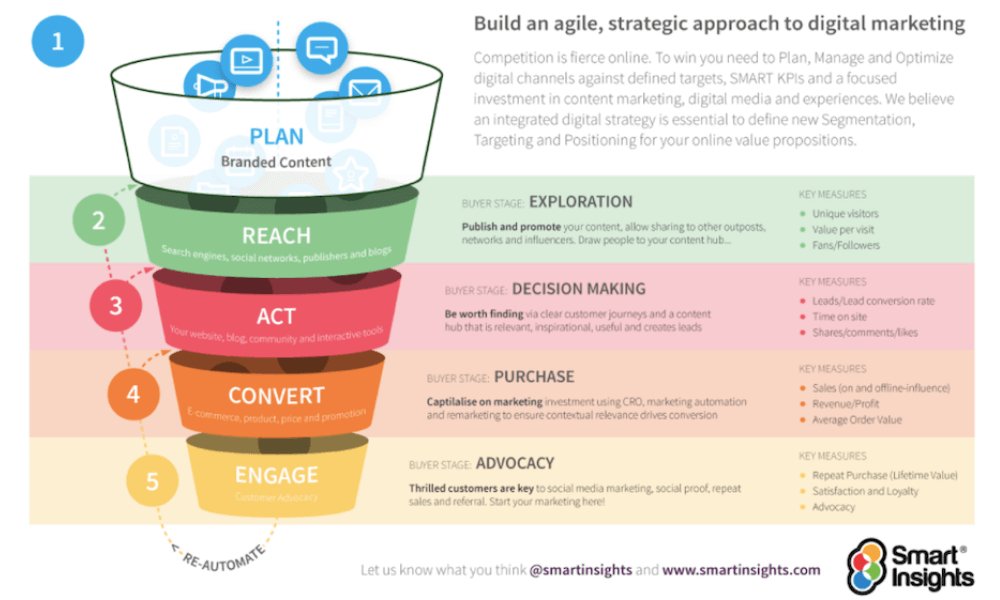
Source: Smart Insights
No one can create perfect content strategies out of nowhere. It involves research and creativity. What marketing examples are your competitors using to improve their organic search results?
Inbound vs. outbound marketing
You’ll have different marketing campaigns within your content strategy to reach your target audience with various approaches.
An inbound marketing strategy focuses on content creation that draws customers in. For instance, inbound marketers might target audiences with a lot of content, including blog posts, video marketing, and a social media strategy. Typically, you can measure inbound marketing digital strategy through your distribution channels’ analytics.
Outbound marketing efforts have a broader approach. With wide-sweeping mail, emails, TV ads, billboards, and other passive content types. It’s harder to measure outbound marketing activity effectiveness. Inbound marketing has a more subtle, personalised approach; outbound marketing targets everyone hoping to convert a small number.
Examples of content marketing
Examples of documented content marketing include:
- Blog posts.
- Videos.
- Webinars.
- How-to guides.
- Email campaigns.
- Magazine ads.
- TV ads.
- Social media content.
- Social media ads.
In today’s world, your digital marketing strategy is just as important, if not more so, than traditional content marketing strategy examples.
Why are marketing strategies essential?
Types of marketing strategies have been around since the first person sold an item to another. We’re all constantly marketing ourselves to others — when we apply for a job or make a new friend.
Effective content marketing is no different for businesses. But, why should your business plans consider your marketing goals? In the last few centuries, marketing teams have taken their market research and strategies to a new level.
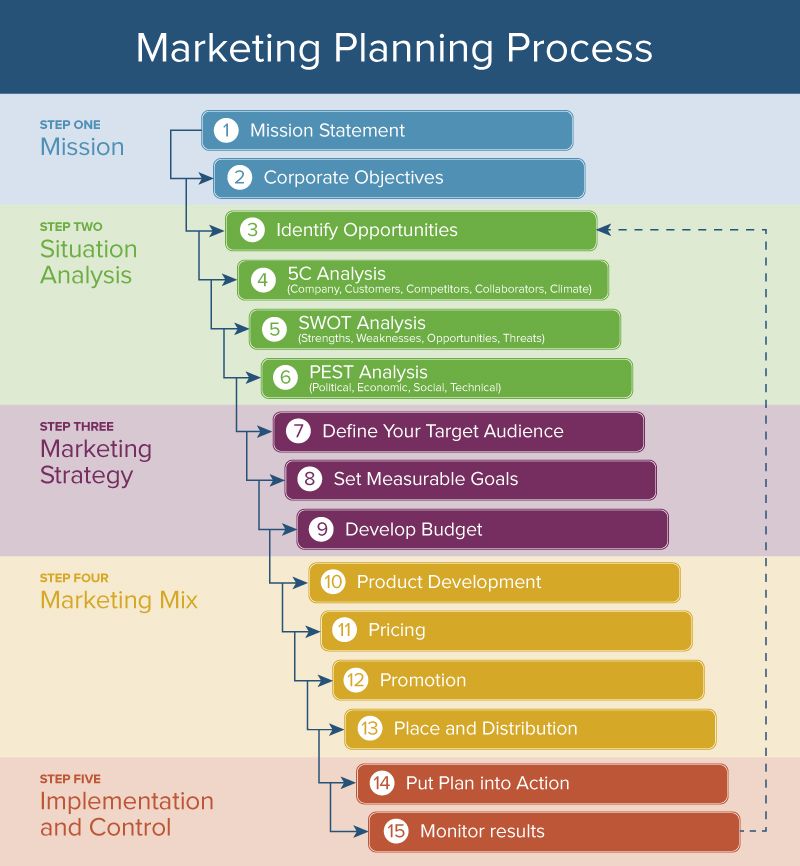
Source: iMarkguru
With the rise of consumerism and the ease of shopping, it’s even more crucial you present your unique value to the customer. There is such an abundance of competition. Without marketing assets, you will fall behind the curve.
Here’s why you should introduce an develop an effective marketing strategy:
- It provides your business with an edge over the competition
- Improves brand awareness and profit potential
- It’s scalable and you can adapt your online marketing strategy as your business grows
When things go wrong, your marketing strategy will provide you with quick-fix solutions for public relations management.
Creating a successful marketing strategy
So, what should you include when you plan your content marketing strategy? Every business is different, but you should follow these steps to gather the proper research tools to understand the user experience and create practical editorial calendars.
1. Identify your business goals
Firstly, you should determine what you want from your marketing tactic. Do you want to grow your business? Promote a cause? Improve the buyer journey? Setting goals is a priority. With your mission statement in hand, you can begin creating an actionable content distribution.
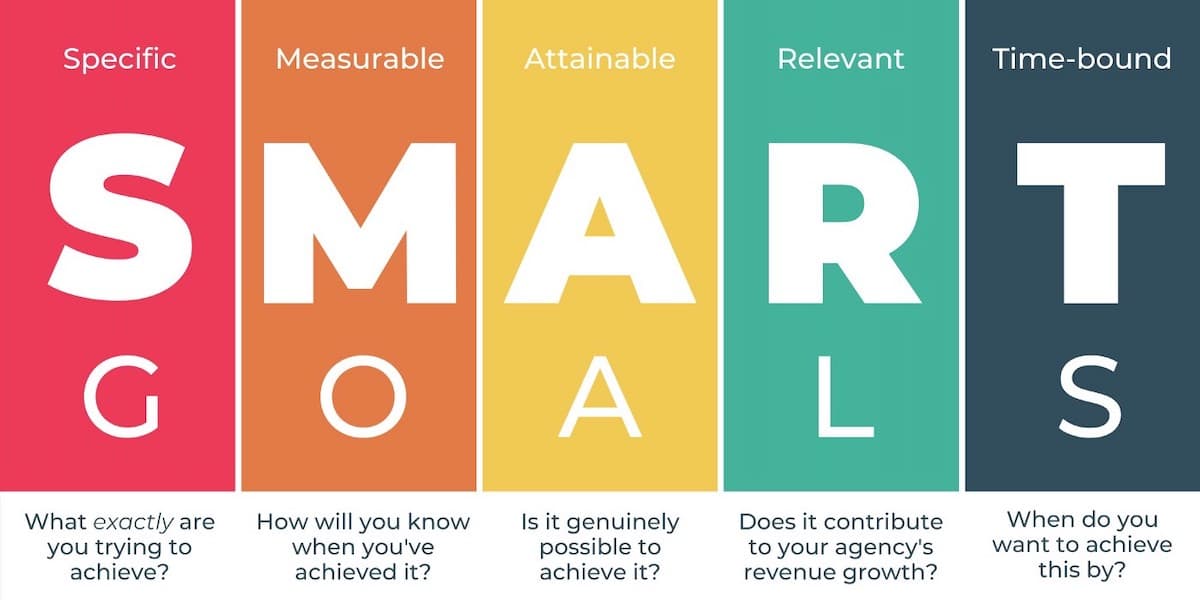
Source: Breeze
It’s best to create specific, measurable, and targeted goals. Consider using SMART goals:
- Specific.
- Measurable.
- Achievable.
- Relevant.
- Time-bound.
Your business goals aren’t your marketing goals. Instead, they are the overall aims of your company. A successful marketing strategy will help you reach broader goals.
2. State your marketing goals
Secondly, you should devise a marketing goal. The goal could be to create a new sales funnel, plan content for a new audience, or improve conversion rates. These goals might take weeks, months, or years to achieve — as long as you have a time frame in mind, it doesn’t matter whether they are short or long-term goals. 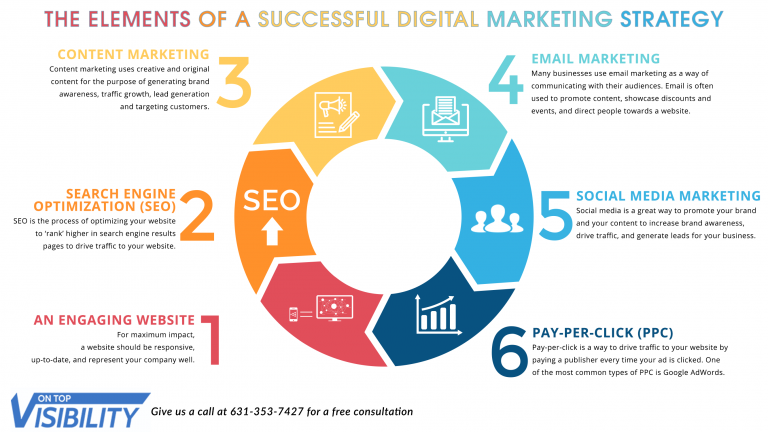
Source: Marketing Insider Group
Ensure your strategies are practical and measurable. It would help if you continuously revise your game plan as you meet goals, develop your brand story, grow your marketing budget, and change the landscape around you.
Regularly review your target customer, competitor, and new technologies to ensure your marketing content teams still effectively promote your unique selling point.
3. Research your market
Research is the backbone of your strategic plan. You need data to back up your content planning.
Who are your potential customers? If you’re reaching a global audience, your research will have to include details for every demographic; you’ll need different types of content and marketing.
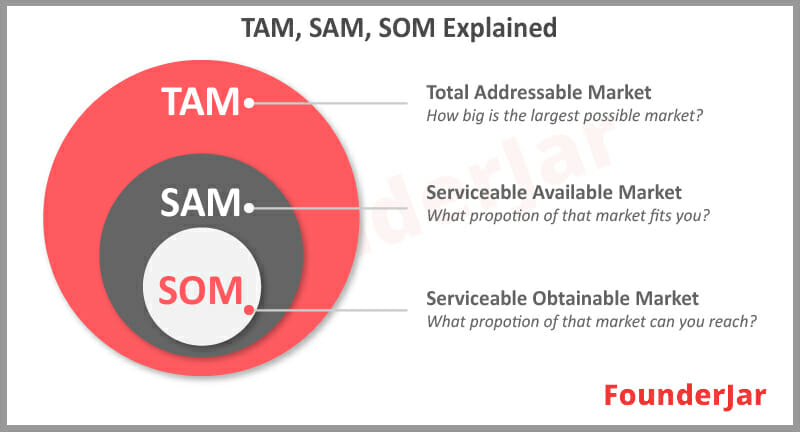
Source: FounderJar
On the other hand, if you’re focusing on a local audience, consider the in-depth, personal information that will improve your local SEO strategy.
You should gather information about your target market, including:
- Buyer persona.
- Size.
- Growth.
- Social trends.
- Demographics.
4. Profile your potential customers
As a content marketer, your next step is to profile your potential customers. Successful brand positioning means understanding your audience, why they might want to engage with your company, and their pain points.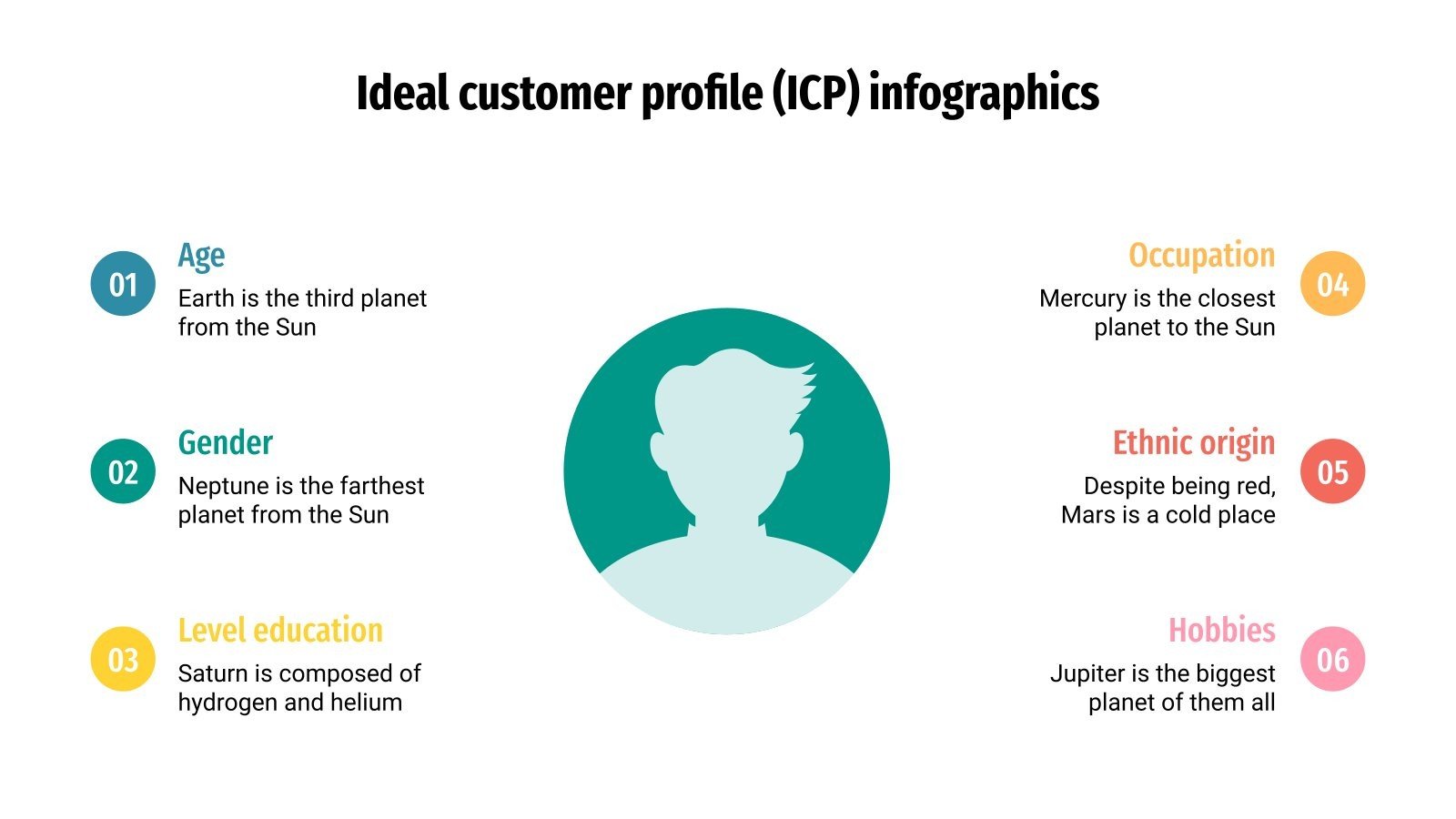
Source: Slidesgo
For instance, if your potential customers are mainly of a younger generation, you will need to emphasise your social media marketing content channels to improve your online reputation.
On the other hand, if your audience is primarily older, you’ll focus on traditional content formats. You should identify their needs and buying patterns and regularly review market trends.
5. Understand your competitors
Similarly, you should conduct competitor research. Look at success stories to understand how they operate their social media strategy and lead generation tactics. What works and what doesn’t? See if you can adopt elements of their content marketing strategies that suit your business.
However, don’t copy and paste. Your publishing content should be original and unique to improve your conversion rate. Moreover, it should be better than the competitors.
6. Create optimised content
A company that regularly produces content with keyword research tools, style guides and customer user personas in mind will do much better than one that creates random posts. Consider topic clusters, keywords, unique graphic design, and your customer’s experiences to optimise your content performance. 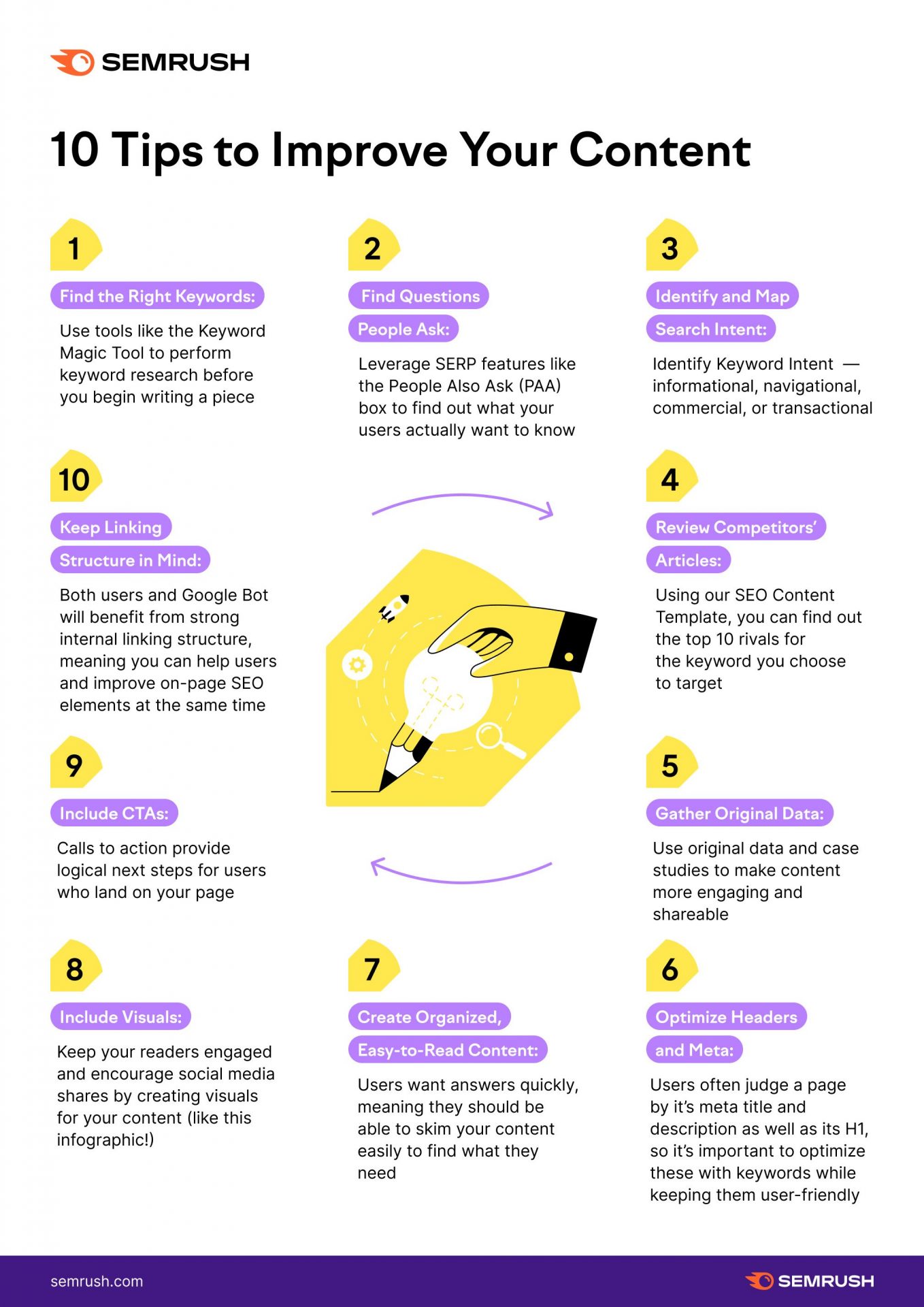
Source: Semrush
You may wish to outsource to professional content creators to focus your energies elsewhere. Following a content calendar is a full-time job. As your business grows, your marketing content workflow will similarly expand.
7. Test performance
Test your internal marketing strategy. Continually revise and test your new and existing content to ensure your complete marketing strategy is successful. Fortunately, Google analytics and other platforms offer valuable data. It would help if you also used A/B tests and SWOT analysis to understand the success of new strategies.
How often should I update my marketing strategy?
Marketing strategies are fluid. As the landscape around us changes, your content marketing plan should shift to keep up and stay competitive. Always ensure your brand voice remains consistent.
Review your strategy once a year, and this could include adjusting goals, implementing new plans, and regular content audits. Remember to update existing successful content to ensure it continues to promote your brand.
Summing up
Creating a customer-focused marketing strategy to promote your content, improve the user experience, increase brand awareness and boost conversion rates is vital to any business. To ensure your organic marketing strategy stays ahead of the curve, get in touch with BlindSeer.
David Schneider is the owner & founder of BlindSeer. He has over 8 years of experience in SEO. In addition he offers a unique viewpoint on the way SEO works with over six years previously working in Human Intelligence understanding how people think & act and how to drive people to take action.